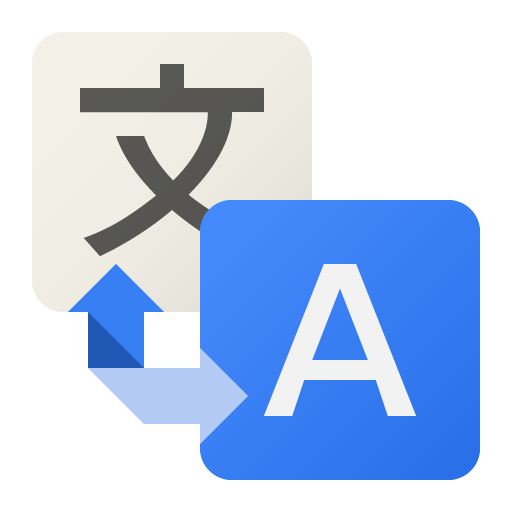Translate locale file-AI-powered file translation
AI-Powered Localization File Translator
Hello, wich file can i translate for you?
Related Tools
Load More
Translator
A multilingual translation robot for instant communication and document processing.

Translate
Expert in translating text, images, and audio across languages. Upload your homework, translate a song, or check the grammar rules. Everything is possible with your personal language tutor.

Translator
Bilingual translator between English and Chinese

Translator
Formal translator for business emails, Japanese to English and others to Japanese

Multilingual PDF Translator MD
Multilingual PDF Translator with Markdown

Web/Light Novel Localizer/Translator
Localize/Translate a Web/Light Novel chapter from Japanese to English with Expert Quality
20.0 / 5 (200 votes)
Introduction to Translate Locale File
Translate locale file is a specialized tool designed to facilitate the translation of text strings in software localization files. Its primary purpose is to support developers, localization experts, and businesses in efficiently translating their software into multiple languages, ensuring that the syntax and structure of the localization files are maintained. This tool is particularly useful in scenarios where software needs to be adapted for different regions and cultures, enabling users to interact with applications in their native languages. For example, a mobile app developer could use Translate locale file to translate their app’s user interface strings into French, Dutch, and other languages, ensuring consistency and accuracy across all translations.

Main Functions of Translate Locale File
Syntax Preservation
Example
A developer working on a multilingual e-commerce website uses Translate locale file to ensure that the translation of product descriptions into German retains the correct HTML tags and JSON structure.
Scenario
Ensuring that the translated text strings maintain the correct syntax is crucial for avoiding errors in software applications. This function helps prevent issues like broken tags or corrupted JSON files.
Batch Translation
Example
A localization team needs to translate thousands of strings for a new software release. They use Translate locale file to process the entire batch in one go, translating all strings into Spanish and Italian simultaneously.
Scenario
Batch translation significantly reduces the time and effort required to localize large software projects, making it possible to handle multiple languages and large volumes of text efficiently.
Automated Language Detection
Example
An app developer inputs a file with mixed language content. Translate locale file automatically detects the languages present and offers appropriate translation options.
Scenario
This function is particularly useful in mixed-language environments or when the original language of the text strings is unknown, ensuring accurate and relevant translations.
Ideal Users of Translate Locale File
Software Developers
Developers working on internationalizing their software applications benefit from using Translate locale file to ensure that all user interface strings are correctly translated and formatted for different languages. This streamlines the localization process and reduces the risk of syntax errors.
Localization Teams
Teams dedicated to translating and adapting software for various markets find this tool invaluable for managing large translation projects. Its ability to handle batch translations and maintain file integrity is crucial for efficient workflow and quality assurance.

Guidelines for Using Translate Locale File
1
Visit aichatonline.org for a free trial without login, also no need for ChatGPT Plus.
2
Upload or paste your locale file into the input section provided on the website.
3
Select the target languages for translation from the available options (e.g., English, French, Dutch).
4
Review the translated output for accuracy, ensuring that the syntax and structure are retained.
5
Download the translated file or copy the text for use in your application.
Try other advanced and practical GPTs
noteAI (ベータ)
AI-powered tool for smarter writing

多様な視点 - saysay.ai
AI-powered insights for broadening perspectives

F1翻訳マイスター
AI-powered tool for precise F1 translations.

論文よめる君
AI-powered summarization for academic and online content.

DevSecOps Guides
AI-powered security for your DevOps pipeline.

Blue Team Guide
AI-Powered Detailed Assistance for All Your Needs

LikeImFive GPT | Get Clear Answers Fast
AI-Powered Clarity for All Your Questions

There's a GPT for That | GPT Search Engine
Discover the perfect AI tool for any task
手把手带你博士毕业
AI-powered PhD Support Simplified

Web Designer Assistant
AI-powered inspiration for stunning web designs.
CatGPT
AI-powered responses with a playful purr-sonality

Mythical Beast Creator
AI-powered tool for designing mythical creatures.

- App Development
- Document Translation
- Content Management
- Website Localization
- Software Localization
Q&A about Translate Locale File
What is Translate Locale File?
Translate Locale File is an AI-powered tool that translates localization files while maintaining their syntax and structure, supporting multiple languages such as English, French, and Dutch.
How can I access Translate Locale File?
You can access Translate Locale File by visiting aichatonline.org, where you can use the tool without needing to log in or subscribe to ChatGPT Plus.
What types of files can be translated using this tool?
Translate Locale File can handle various localization file formats, including JSON, XML, and other common text-based files used for software localization.
Does the tool maintain the original file's structure during translation?
Yes, the tool is designed to retain the original file's syntax and structure, ensuring that the translated file is compatible with your application.
Are there any usage limitations or prerequisites?
There are no specific prerequisites, and the tool offers a free trial without login. However, for extensive usage, you might need to check if there are any rate limits or subscription options.